Picking up where we left off, here’s the best of the best of this year’s most outstanding albums. If you haven’t already, do.
15 | Tim Hecker – Infinity Pool (Original Motion Picture Soundtrack)

One of the year’s most discomfiting movies (Branden Cronenberg’s best to date) requires nothing less than an equally disquieting score. While most film composers these days are dismally content to reduce their aspirations to churning out the most generic formulations of empty bombast and noodling, Tim Hecker fully embodies the weird horror of Infinity Pool in a series of vignettes that escort us into a similarly dark and terrifying soundworld. Not for Hecker the cheap resort to violent contrasts and blank noise. Instead, he presents a litany of slow-burn nightmares, often underpinned by disturbingly slow, steady pulses, like an inexorable march towards doom. Colouring the score as a whole, though, is an abrasive palette of the most acidic music you’ve ever heard. Bass buzzes as it burns, pitches fizz and turn caustic, caked in noise and detritus to the extent that any and all elements suggesting sustain or suspension are cancelled out. The score often introduces warmth, as in ‘Ekki Gate’, one of its highlights, yet even here its beauty is undermined by its context, and the traces of pungency at the fringes make this little more than an oasis in a very dangerous place. The combination of musical subtlety with a willingness to overwhelm in an unstoppable acerbic overload – while retaining absolute clarity over details – make this the most stunning film score of the year. [DL]
14 | Lotta Wennäkoski – Sigla / Flounce / Sedecim
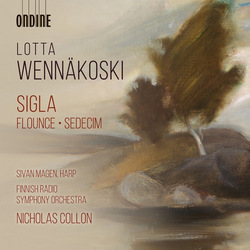
Energy dominates this portrait disc devoted to the orchestral music of Finnish composer Lotta Wennäkoski, performed by the Finnish Radio Symphony Orchestra conducted by Nicholas Collon. The title says it all in Flounce, five minutes of by turns flighty and blaring rhythmic material, mischievously turning inward between bouts of boisterously strutting its stuff. There’s a wildness to the music that makes its metric order continually sound perilously close to coming off the rails completely, making it so much more than just another rip-roaring concert opener. The three-movement harp concerto Sigla is similarly driven, though that motivation comes directly from the soloist, whose elaborate fingerwork is at the core of the work’s momentum. Where Flounce was all chaotic clarity, Sigla opts for more fleeting ideas that often become blurred as they race along before our ears. Even in the slower central movement, the harp (superbly played by Sivan Magen) passes through passages obscured by rapidity and obliquity, though this is but a diversion, propelled back to full speed in the lengthy finale, once again embracing hectic clatter while slower melodies fly above. Sedecim is a nice contrast to these works, Wennäkoski exploring a more thoughtful, variegated landscape that prefers mystery to momentum. This is especially so in the central movement, which in the midst of what’s gone before is disarmingly elusive and volatile, peppered with unsettling whispers and ominous swells. [CD / DL]
13 | IAMX – Fault Lines¹
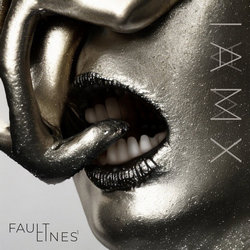
I’m not sure what’s more remarkable, the fact that it’s now nearly 20 years since Chris Corner detached from Sneaker Pimps as IAMX, or that he’s managed to stay true to his singular, hypermodern, electronic modality without sounding tired or repetitive. The passion that’s always driven his music is just as present on Fault Lines¹, once again pulled between polarities of buzzing techno fury and achingly fragile lyricism. This wild oscillation is at the heart of Corner’s musical language, usually taking the form of relatively mild, often intimate verses that are answered by unchecked, full-blooded choruses that threaten to rip the world apart. One of the most compelling aspects of this album is the surprisingly slow pace found in songs like ‘The X Id’, ‘Radical Self-Love’ and ‘Thanatos’. This works in tandem with harmonies more implied (in the bass) than anything else, such that Corner’s cutting lyrics become overwhelmingly insistent, punching through any listener complacency into our very souls. At times (‘In Bondage’) the music absolutely soars, demonstrating again the extent to which Corner’s voice can make anyone’s heart instantly break. But equally powerful is his rage: the repeated accusation in ‘Thanatos’, “you bury your dreams in apathy”, is blisteringly severe, conveyed in the midst of razor sharp, caustic choruses, while in closing track ‘Army of the Winter Sun’ emotion seems to go beyond breaking point (the song’s opening line is “Selfing overload”) into a gritty metallic space of hard edges and pixellated vocals. Malfunction or transcendence? Either way, it’s an unforgettable end to another astonishingly visceral IAMX release. [CD / LP / DL]
12 | Vitolo, Buoninfante, De Rosa – 171115-203145

In the cryptically named 171115-203145, the trio of Anacleto Vitolo, Luca Buoninfante and Mariaceleste De Rosa explore a quartet of electroacoustic improvisations. Each of them is beautifully and sensitively created, on the one hand allowing the panoply of real and synthetic sounds to speak with an almost arbitrary carefree abandon, on the other hand guiding them within the broader musical context such that the resulting sculptural form has a marble-like smoothness. That doesn’t mean there are no shocks or surprises along the way; on the contrary, the range of sounds called upon here is considerable, lending the music a continual sense that anything could, and probably would, happen in the next instant. Yet it’s the control that Vitolo, Buoninfante and De Rosa demonstrate that makes this album as stunning as it is. The result is Escher-like processes of transformation, often conveying an impression of equilibrium, that the music’s component parts – of which there are an invariable myriad – are all held together in a magical, mobile-like suspension. At the same time, though, nothing is ever static: noise yields to wind, pitch becomes throb, tones fragment, glitch, accelerate and evaporate, notes are extruded to infinity and fade before our ears, impacts collide and break-up these formations while creating new ones, all the while mesmerising in a blur of grain, buzz, twitch, blip and squelch, while reverberant tones spiral outward and clouds of overload threaten to overwhelm, laser-like blasts bore through our brains, and here and there there’s even a trace of imaginary creatures. Incredible. [DL]
11 | Enno Poppe – Prozession
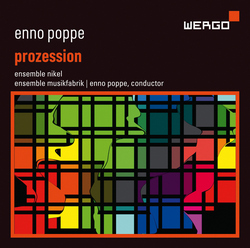
“Prozession is just as impressive on disc as it was in the concert hall, and it makes for a powerful and illuminating complement to the live experience. … What we hear is a music simultaneously moving forward while continually restarting, recalibrating, reconfiguring itself. There’s a palpable struggle playing out, between disorientation and determination, articulated in a language caught between keening and joy. … Prozession isn’t so much marshalled as gently and sympathetically prodded by a quartet of percussionists, whose role sometimes seems to be merely getting and keeping things going. Yet their omnipresence seems essential in galvanising the ensemble and encouraging them to inch their way toward, first, a voice, and eventually, a song. The process is fascinating and moving, nebulous traces of pitch becoming crude smears in the air, while motes of a motive (in every sense of the word) help formulate the beginnings of something tangible. … i can’t fail to mention the astonishing forms of lyricism that emerge along the way, sometimes squally and uncontrolled, other times delicately wavering, or, in one of its most memorable passages, passing through a dark, low register realm producing a frankly astonishing array of deep velvet-black timbres and colourations. It’s an oscillating hymn of rising and falling, soaring and crashing, but never stopping, even as its melody becomes diffused into chord agglomerations, and it ends up, not in a conventional place of triumph, but somewhere infinitely more enigmatic, suggesting a pained kind of peace.” [reviewed in December]
10 | Berlin Philharmonic – The Unsuk Chin Edition
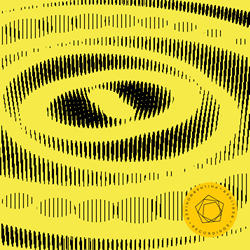
“The focus in The Unsuk Chin Edition is on orchestral music, and the Berlin Philharmonic has plundered everything they have from their archive… . The result has a distinct emphasis on concertante music, comprising three concertos, another work with soprano soloist, and two orchestral pieces. … Something clarified by this box set is the extent to which Chin’s soloists come across as extroverts, never bogged down by navel-gazing or wistful brooding, but always driving onward (indeed, they’re almost never silent), breezily navigating their way through the volatile, capricious environments they inhabit. Perhaps nowhere is that more true than in the Piano Concerto, which Sunwook Kim clearly (and not inappropriately) regards as an extended exercise in free-wheeling textural decoration, one that never moves too far from playful momentum even while encountering massive swells, tempestuous passages and one or two moments of borderline aggression. … The entire Unsuk Chin Edition is a highlight in and of itself, but the standout performances are those of the Violin Concerto and Le silence des Sirènes. … The [concerto] displays a more nuanced, and more extensive, interplay of texture and melody, often moving far away from the momentum that tends to dominate her music. In the second movement this is presented as a powerful contrast of lyricism and noise, the violin somehow prevailing against huge dissonant raspberries from the orchestra. Le silence des Sirènes … is simply jaw-dropping, [Barbara] Hannigan not merely negotiating her way through both the verbal and musical gymnastics … but actively embodying them in what practically amounts to a 16-minute solo opera … it’s a complete and utter tour de force, perfectly aligning composer, voice, conductor and orchestra.” [reviewed in December]
9 | Kali Malone – Does Spring Hide Its Joy

“Does Spring Hide Its Joy is among the most – and might just be the most – compelling music i’ve yet heard in 2023. It presents itself three times, with each one-hour rendition of the piece teasing out more details, while hinting at a never-ending range of possibilities that could emerge. This is essentially behavioural drone rather than literal, where pitches materialise, sustain and move or vanish, causing a continual reappraisal of the work’s overall harmonic and timbral implications. … One of the work’s most engaging properties – also subject to continual change, sometimes suddenly – is its perceived stability. There are times when everything about Does Spring Hide Its Joy seems measured and controlled, yet this is consistently undermined by yawning abysses that open up and tectonic quakes caused by deep bass judder. … Notions of triads and fundamentals are ultimately undermined by the music’s rethinking (rejection?) of tonality. There’s the impression that all pitches in all registers are independent – not at odds with each other but part of a disparate, large-scale mobile where relationships are incidental, even accidental, rather than being necessarily part of a preordained underlying unity. … Do we need three versions? Why not just one, or five, or 10? Why one hour? Why not three, or five, or 10? This isn’t a complaint, not at all, it simply underlines the fact that what we’re dealing with here is that most quintessential aspect of ambient, music that could / would / should go on forever, while we remain immersed deep within it, pulled and released by its continually changing tension and attraction.” [reviewed in June]
8 | György Ligeti – Études / Capriccios

“From pianist Han Chen comes a new album featuring all three books of Études, together with both Capriccios. … My suggestion that the Capriccios here sound as a playful contrast to the Études is primarily because Han Chen’s approach is somewhat ‘scientific’ (though never clinical), inasmuch as he makes the single idea in each Étude his absolute focus. It’s an approach that proves conducive, not simply making each Étude an immersive experience but convincing us that, for its duration, its behavioural nature and limits are all that are possible. It’s as if we were listening to a sequence of experiments, each temporarily redefining the laws of physics. Chen’s approach also makes total sense with regard to these works’ overall name: these are pieces that literally study, observe, set an idea in motion and see what happens as it plays out. … The Études thus become a series of diverse investigations, producing swirling cycles, half repetitions and churning surfaces, jittery staccato spasms, a stained-glass window kaleidoscope effect, and an ambitious cavalcade of burbling speed and measured chords held in a tension that develops into fluid, overlapping torrents. … Other highlights: Vertige has never sounded more like a piece of Bach performed by a player piano with the tempo set far too high; from the rapid chugging of Columna infinită Chen teases out the shape within, as if carved from something semi-solid; the rapid sense of falling resulting from the overlapping cascades of White on White; and the way À bout de souffle conveys both a sense of dancing elegance while maintaining the integrity of its ongoing process. Overall, it’s a superb, fresh take on one of the most significant contributions to the piano repertoire of the last century.” [reviewed in May]
7 | Gérard Grisey – Mégalithes

“Mégalithes is a bracing, exhilarating work. It’s like a sonic Stonehenge, its music makes one feel small, in terms of both stature and longevity. … The NyNorsk Messingkvintett recording features two of the nine permutations, versions 3 and 7… . They are both superbly focused performances, version 7 benefitting from a slightly expanding performative dynamic range, such that the swells and greater, while they tiny sounds become miniscule. Comprising a contrabass tuba solo, it’s performed here by Berger Iver Færder who chooses to be rather more expansive than Grisey intended, but the result is quite wonderful… . The album also comes with … Anders Tveit‘s Untitled Echoes for Adjacent Rooms. Listening to Gérard Grisey, an electronic work derived from the sounds in Mégalithes. Positioned between the two performances of the Grisey, it’s a gloriously immersive addition to the soundworld, one that in no way detracts from its monumentality. If anything, it adds an air of gothic to the album, threatening to overwhelm but holding back, often reducing the brass sounds to fleeting, distant traces set in an abyssal trench, surrounded by hard to parse generalised stuff. … it’s a perfect complement to Mégalithes, making this album as a whole one of the most exciting and refreshing things i’ve heard this year.” [reviewed in June]
6 | Autechre – AE_LIVE_2022

By now, Autechre’s live performances have a familiarity that borders on the formulaic. Except, of course, that’s partly the point. As with their previous set AE_LIVE 2016/2018 released in 2020, the seven performances captured in AE_LIVE 2022 are again variations on the same basic outline, though each one undergoes such a plethora of un-/semi-predictable permutational changes along the way that it emerges as a unique composition, a sibling rather than a clone. As such, the differences between them – on both the small- and long-term – are far more noticeable than their broad similarities (which pertain primarily to structure and dynamic contour). The duo’s Milan performance, ‘AE_LIVE_MILAN_010722’, stands out primarily due to the extent that it demonstrates how, despite the familiarities and formulas, Autechre continue to be one of the most utterly thrilling live electronica acts in the world. The moment-by-moment details are as fantastically convoluted as ever, often caught in a balance of energies, seeming to be pushing forward / outward / onward but actually held in check. Pulse identities become confused, tempos appear to be different from or even double what we thought (or multiple tempi simultaneously), and the music as a whole is subject to the most intensive state of flux. The structural gearshifts hark back to the sectional beat and chill contrasts from the clubs, but Autechre left such functional notions behind a long time ago. This is dance music transcended into pure drama, its syncopations rippling with the most intense exhilaration. [DL]
5 | Bára Gísladóttir – SILVA

“SILVA … is a work that demonstrates superb control of activity and passivity, together with a telling sense of perspective, in terms of both near and far as well as left to right across the stereo field. … It’s a tactile music, the close, intimate, acoustic sounds from the bass mingling with and expanded by the electronics. Repeating loops regularly appear, as does a lurking fuzzbuzz at the periphery, the latter forming an essential part of the complex grain of the music. … The second section takes this nascent song and allows it to emerge more fully, initially like glinting light but becoming squally and intense. Almost everything around the bass falls away, in a mesmerising sequence that reveals how narrow and exposed the music has become at this point. It’s almost painfully immediate. The third section … returns to the soundworld of the first, though at times interestingly caught between drifting and momentum, in part caused by rhythmic tappings that appear. … The final section … goes even further than the second, pulling everything back to the point where it has almost died away. … Bára Gísladóttir’s ability to take a relatively simple palette of timbres and ideas and weave such an extensive, ever-changing tapestry as this is genuinely masterful.” [reviewed in June]
4 | Śniedź – Zero Prawdy

Zero Prawdy (“no truth”) is an incredible electroacoustic smorgasbord from vocalist Aleksandra Klimczak and electronicist Antoni Beksiak, both of whom get more than a little involved in each other’s primary areas of expertise. The twelve tracks (which range from 3 to 8 minutes’ duration) sound less like individual pieces than distinct but interrelated movements of a larger unified whole. Throughout, essentially nothing sounds natural; sounds are filtered and processed to and beyond the point of recognition. They’re then reformed into complex sound materials that become the not-remotely-raw material for elaborate sculptures. What makes these sculptures so powerful is the balance between the drama guided by the electronics and the humanity emanating from the vocal traces that permeate them. Sometimes the voice is broken and mechanised, fashioned into inhuman cycling rhythmic patterns. Elsewhere, though, it’s an almost shockingly stark lyrical locus, a point of identity within shifting abstract forms. Until, that is, ‘tajemniczy liści szept’ (“mysterious leaves’ whisper”), where for four minutes the music veers into a jaunty folk song, which in turn causes one to reconsider the lyrical undertones that pervade all of Zero Prawdy – especially ‘ziemisty uchrobak’ (“earthy earworm”), where song seems to be lurking, liquified, within its layers of reverberation – and which only makes its mesmerising sequence of intricate sound forms yet more compelling. [CD / DL]
3 | Liza Lim – Annunciation Triptych
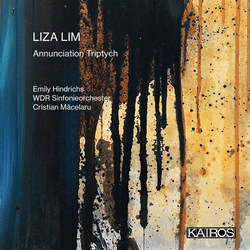
Where to begin with this extraordinary music? Lim’s output tends toward intricate, fastidiously conceived and executed ensemble works, exploring uncharted regions of the instruments, along the way teasing out the beautiful, the ugly and the downright bizarre. This release of Lim’s 40-minute orchestral Annunciation Triptych is therefore a relatively rare opportunity to experience Lim’s creativity on a much larger canvas. And what an extraordinary treat it is! Despite being on such a grand scale, Lim shows the same attention to detail as ever, crafting music that isn’t only intimate but tactile, showing all the tenderness and sensuality that so often characterises her work. The first two parts of the work, ‘Sappho / Bioluminescence’ and ‘Mary / Transcendence after Trauma’, explore exquisitely balanced but unpredictable narratives, tilting between hectic bursts of activity (often withholding their innermost details), enigmatic pauses and periodic surges of triadic radiance. At their most intense, these convey a sense of real ecstasy, adding to an already sumptuous, opulent soundworld that delights as much as it (briefly) disorients. The concluding movement, ‘Fatimah / Jubilation of Flowers’, enters more contemplative territory, the orchestra now supporting a solo soprano with decorative sympathetic responses, often reduced to just a single instrument. Until, that is, the work’s conclusion, where their richness takes on an almost filmic lustre. [CD / DL]
2 | Katie Gately – Fawn / Brute

Katie Gately’s fourth album isn’t just her best – and that’s up against some seriously stiff competition – it’s indisputably the most ludicrously imaginative experimental pop produced by anyone in 2023. Taking inspiration from the birth of her child, she’s created a song cycle that’s as innovative verbally as it is musically. Aside from its natal starting point, the other fundamental aspect that binds Fawn / Brute together is the way she presents the songs as so many avant-folk processionals, gathering an imaginary retinue of sympathetic followers with Gately herself at the front, leading them all as troubadour. These processionals are generally slow, allowing not only time to articulate their complex twisting poetry – littered with alliteration and rhyme, veering between nonsense, wordplay, recitation and heartfelt outpouring – but also, more significantly, for Gately to organise large-scale accumulations. Though always engaging and fun, there’s a scale to these swells that’s extraordinary, appearing from the start in opening song ‘Seed’, and becoming a consistent facet of the music’s overflowing energy and callithumpian dynamic. The resultant wide contrasts – reinforced by a tendency to harmonic stasis in many of the songs – makes their climaxes resound with such a frenzied elation that you just want to dance and shout and sing along. [CD / LP / DL]

1 | Dieter Ammann – Core – Turn – Boost & Unbalanced Instability

When i first wrote about this astonishing album a couple of months ago, i mentioned that Dieter Ammann’s triptych Core – Turn – Boost had “a symphonic consistency … that makes listening to it as a 40-minute entity a deeply satisfying and cohesive experience”. The more time i’ve spent with the music has only consolidated that perspective, to the extent that i now find it hard not to think of it as a symphony. As such, beginning the album with Ammann’s violin concerto Unbalanced Instability, a live performance featuring its own applause at the end (the inclusion of which i had originally felt jarring) works perfectly, acting as a concert opener, raising the curtain and calibrating our expectations regarding what’s in store.
That being said, the concerto contains more overt lyricism than the triptych, acting in tandem with a gorgeous rich opulence to form a counterpoint to arguably the most prevalent and memorable characteristic of all the music on this disc, volatility. What makes Ammann’s work so compelling, and overwhelming, is not just his willingness but his enthusiasm for exploring a massive behavioural dynamic range, encompassing extremes of activity, and wide aesthetic spectrum, incorporating the most pretty and ugly sounds and timbres (the definitions of which, of course, are in the ear of the beholder). This lends his music a heightened, even magical quality, subject to whims and forces that go beyond our immediate understanding yet which lead to long-form narratives that, while bewildering at times, never for a moment sound wrong or arbitrary.
i wonder whether any orchestral music has ever put that to the test more than in Core – Turn – Boost. Ammann begins in a place where “volatile” is no longer adequate to describe the catastrophic disruptions that characterise its music. Incredibly exciting from the outset, though initially kept quite restrained, we encounter a mix of curious sounds, erratic behaviour and lyricism all within the first 60 seconds. How we end up in the mercilessly sustained uproar that ensues is hard to fathom; Ammann hurls us into the very heart of an enormous maelstrom of the most turbulent (but never out of control) stuff on a huge scale. Again, the extent of its power practically goes beyond words; lyricism isn’t allowed a chance to speak in this inhospitable environment.
From the imposed symphonic perspective, Turn acts as the slow movement, though lyricality only ever manifests as a possibility, something potentially lurking in the periphery. What has changed, fundamentally, here is that now the music is held in balance by persistent sustaining elements (the work’s title, again in this broader view, could suggest a turn in the quasi-“symphony” from one behaviour to another). Chatter and chaos continually threaten, yet different forms of harmonic clarity push back, and the work finds itself in a suspended place of beauty, given a weird chill at its close with a strange breathing effect.
One might expect from its title that Boost will act as a stereotypical finale to this large-scale tripartite work, yet if anything it’s more of a synthesis of Core and Turn. The overt beauty from Turn now develops into more shining triadic sound forms, while the savagery of Core has been transformed such that, without losing any of its power or impetus, it’s able to not merely coexist but fully integrate into its musical opposite. The wild torrents of playfulness now feel directed, less at the mercy of raw energy, and Ammann ups the contrast by allowing the work to fall back into passages of poised near-silence. All the same, at its close some of the chaos is allowed back into the mix, in a dithyrambic conclusion that punches the air with joy, before burning itself out, a dizzying final instance of the unbalanced instability that typifies all the music on this literally incredible album, which is far and away the best of 2023. [CD / DL]
